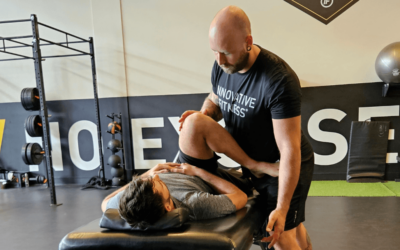Unlocking Potential of Strength Training in Children and Adolescents
Strength training in children and adolescents has emerged as a popular strategy for athletes seeking a competitive edge during the off-season. While concerns about safety and effectiveness have been raised, recent research and guidelines provide valuable insights. In this blog post, we aim to debunk common myths associated with strength training in young individuals and explore the latest recommendations.
What are the benefits of strength training for children and adolescents?
Engaging in strength training programs during the formative years can offer a myriad of benefits. Beyond enhancing athletic performance, these programs contribute to improvements in bone density, balance, lipid profiles, fat-free mass, and personal self-esteem. Even children with muscular and cognitive disabilities like cerebral palsy have experienced enhanced daily function and self-esteem through tailored strength training. The broader message is clear: exercise is an essential part of childhood, with long-lasting implications for adulthood.
How do I know if strength training is safe for my child?
Numerous professional organizations, including the American Academy of Pediatrics, the American College of Sports Medicine, the American Orthopaedic Society for Sports Medicine, and the National Strength and Conditioning Association, support the idea that a supervised strength training program adhering to recommended guidelines is both safe and effective for children. This consensus underscores the importance of a structured approach to ensure the well-being of young participants.
How do I know if my child is ready for strength training?
Maturity—physical, cognitive, and social—plays a pivotal role in determining readiness for strength training. While there’s no minimum age requirement, children should demonstrate adequate balance and proprioception, typically achieved by 7 or 8 years old.

Guidelines for Strength Training Children and Adolescents:
Before initiating a program, clear communication among the training supervisor, child, and parents regarding goals and expectations is crucial. Social media and fitness magazines are riddled with unrealistic images of professionally sculpted and photoshopped bodies. Therefore an emphasis on the dangers of performance-enhancing substances, such as anabolic steroids, and encouraging a focus on performance vs aesthetic results is essential.
The importance of proper technique cannot be overstated. Starting with no-load repetitions to focus on form, progressing from larger- to smaller-muscle exercises, and avoiding continuous maximal lifts are key principles.
Youth strength training programs should incorporate diverse resistance types, such as free weights, weight machines, rubber tubing, and medicine balls, with attention to age-appropriate equipment.
Individualized programs, incorporating a warm-up, cooldown, and an aerobic component, are recommended to ensure comprehensive development.
Dispelling myths about strength training children and youth:

Myth 1: Growth Plate Injuries are Inevitable with Strength Training
One prevalent misunderstanding revolves around the belief that strength training inevitably leads to growth plate injuries. However, research and expert consensus emphasize that a well-supervised strength training program poses no greater inherent risk than other youth sports or activities. The rarity of reported epiphyseal plate fractures related to strength training is often linked to misusing equipment, lifting inappropriate amounts of weight, using improper technique, or training without qualified adult supervision. This underscores the importance of proper guidance and adherence to recommended practices to minimize any potential risks.
Myth 2: Strength Training Stunts Growth
Another persistent myth suggests that strength training can stunt the growth of children and adolescents. Scientific evidence contradicts this notion, highlighting that a well-designed strength training program, following appropriate guidelines, is not only safe but can also contribute positively to growth and development. With an emphasis on proper technique, form, and progression, strength training does not impede the natural growth process; rather, it can enhance bone health and overall physical well-being.
Myth 3: Strength Training is Only for Muscle Hypertrophy
A long-held belief among clinicians was that strength training is ineffective in children until significant levels of circulating testosterone are present for muscle hypertrophy. However, studies have demonstrated that children can experience significant strength gains—30% to 50%—after just 8 to 12 weeks of a well-designed strength-training program. Unlike adults, children gain strength through neural adaptations rather than muscle hypertrophy. This dispels the misconception that strength training is solely about building muscle mass and highlights its role in improving coordination, motor skills, and neural pathways in young individuals.
Myth 4: Strength Training is Ineffective Until Puberty
Some have argued that strength training is ineffective in prepubertal children until they have significant levels of circulating testosterone. However, research shows that even prepubertal children can experience considerable strength gains through properly designed programs. Neural adaptations play a crucial role in this process, challenging the notion that the benefits of strength training only become apparent during or after puberty.
In conclusion, strength training holds immense potential for children and adolescents, fostering not only athletic development but also overall health. With proper supervision, adherence to guidelines, and a focus on technique, youth can safely embark on a journey of strength building. Trained fitness professionals play a pivotal role in ensuring the correct progression of exercises and maintaining a safe environment. It’s time to embrace the science behind strength training and unlock the full potential of our young athletes.
Thanks to Ben Carr, owner of Innovative Fitness North Vancouver for sharing this insight.
Reference: Dahab, K. S., & McCambridge, T. M. (2009). Strength Training in Children and Adolescents: Raising the Bar for Young Athletes? Pediatrics, 123(3), 835–840. Link to the original article.






